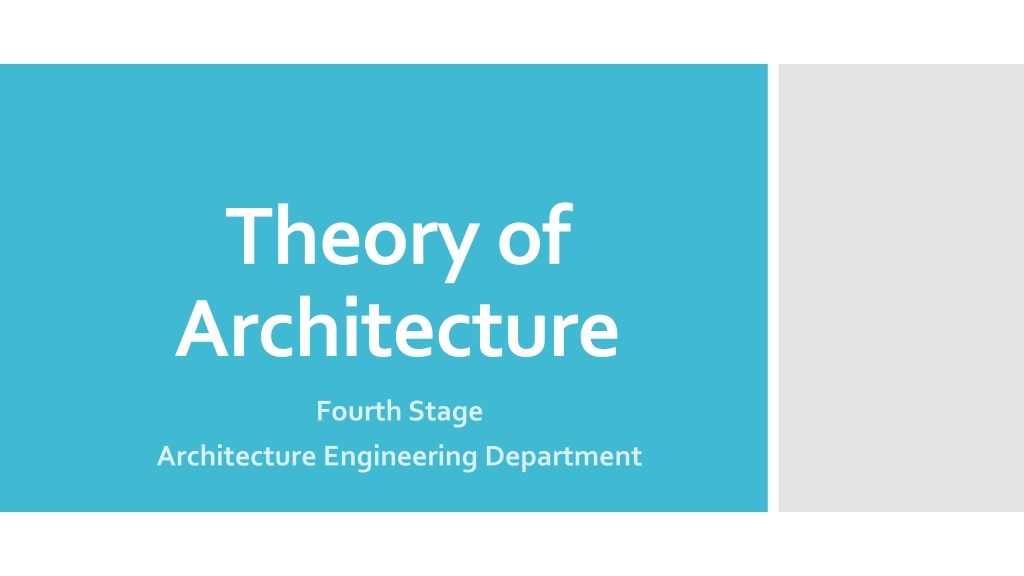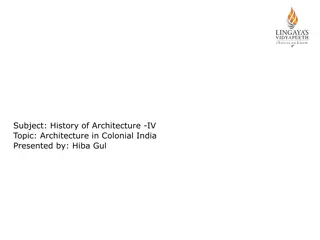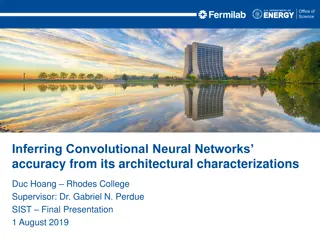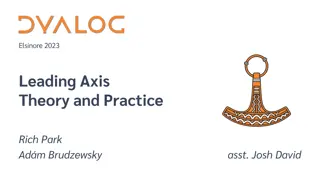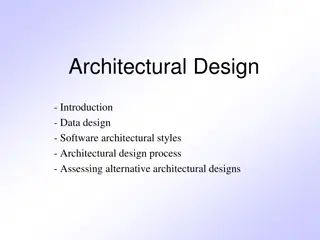Understanding Architectural Theory and Practice
Architectural theory delves into the thought processes behind designing and constructing buildings, emphasizing the interaction between practicality and creativity. It involves a deep analysis of decisions based on various values and factors, sometimes leading to controversial choices. Theoretical understanding complements practical execution in achieving optimal design outcomes.
Download Presentation

Please find below an Image/Link to download the presentation.
The content on the website is provided AS IS for your information and personal use only. It may not be sold, licensed, or shared on other websites without obtaining consent from the author. Download presentation by click this link. If you encounter any issues during the download, it is possible that the publisher has removed the file from their server.
E N D
Presentation Transcript
Theory of Architecture Fourth Stage Architecture Engineering Department
The word theory derives from the Greek theorein , which means to look at as in terms of looking at a theatre stage, which may explain why sometimes theory is used as something not completely resembling real. The verb theorize is "to perceive." an ideal or hypothetical set of facts, principles, or circumstances often used in the phrase in theory the general or abstract principles of a body of fact, a science, or an art. the analysis of a set of facts in their relation to one another Theorem (n.) Theory https://www.merriam-webster.com/dictionary/theory https://orgtheory.wordpress.com/2006/07/11/etymology-of-theory/ https://www.etymonline.com/word/theorem
Architecture is both the process and the product of planning, and constructing other structures. Architectural works, in the material form of buildings, are often perceived as cultural symbols and as works of art. Historical civilizations are often identified with their surviving architectural achievements. designing, or any buildings Architecture
Architecture is not a purely practical discipline. Every design decision is a thought, something that has to be decided, based on an array of values and factors, that come from several sources. Some of those factors can be easily decoded and given an automatic, appropriate solution, like for example, facts coming from the terrain such as the sun position, which would dictate the best orientation of your building. But some other factors and questions will require you to take decisions based on much less obvious grounds, or even very controversial decisions. For example, making a new building in a very old historic place, or having religious issues involved in your project. The project will get different opinions of criticism. Architecture https://en.wikiversity.org/wiki/Theory_of_Architecture
Architectural theory is the act of thinking, discussing, and writing about architecture. "Practice and theory are its parents. Practice is the frequent and continued contemplation of the mode of executing any given work, or of the mere operation of the hands, for the conversion of the material in the best and readiest way. Theory is the result of that reasoning which demonstrates and explains that the material wrought has been so converted as to answer the end proposed. Wherefore the mere practical architect is not able to assign sufficient reasons for the forms he adopts; and the theoretic architect also fails, grasping the shadow instead of the substance. He who is theoretic as well as practical, is therefore doubly armed; able not only to prove the propriety of his design, but equally so to carry it into execution. Vitruvius. Architectural Theory https://en.wikipedia.org/wiki/Architectural_theory
This is the person who is very active in the field of Architecture criticism. Knowing about theorist and critics and how they see architecture is a key to building your own idea of architecture. The Theorist https://en.wikiversity.org/wiki/Theory_of_Architecture
The earliest surviving written work on the subject of architecture is De architectura, by the Roman architectVitruvius in the early 1st century AD. According to Vitruvius, a good building should satisfy the three principles of firmitas, utilitas, venustas,commonly known by the original translation firmness, commodity and delight. An equivalent in modern English would be: Durability a building should stand up strongly and remain in good condition. Utility it should be suitable for the purposes for which it is used. Beauty it should be aesthetically pleasing. The History of Architectural Theory Leon Battista Alberti, who elaborates on the ideas of Vitruvius in his treatise, The Ten Books of Architecture
* Durability * Utility * Beauty (Delight)
Brunelleschi, in the building of the dome ofFlorence Cathedral(Italy) in the early 15th century, not only transformed the building and the city, but also the role and status of the architect.
Criticismis the action of emitting a judgement over someone's work.Architecture criticismis a very important tool in theory of architecture, because it is the ground of what can be considered as the "common sense". Very famous buildings are usually criticized by several important critics, and observing this can give us very important clues for building our own opinion. Criticism https://en.wikiversity.org/wiki/Theory_of_Architecture
the difference was developed by the 15th- century Renaissance architect Leon Battista Alberti. The distinction between the history and theory of architecture did not emerge until the mid- 18th century. Vitruvius emphasized on the importance of history as a source of knowledge for the designer. It is impossible to discuss meaningfully the buildings of the immediate past without discussing the ideals of those who built them, just as it is impossible to discuss the ideals of architects without reference to the structures they designed. The Difference between theory and history of architecture
Architect Spirit of the age Materials and Technology Society Principles etc. Theory of Architecture Buildings Examples Spaces Influences Architecture
